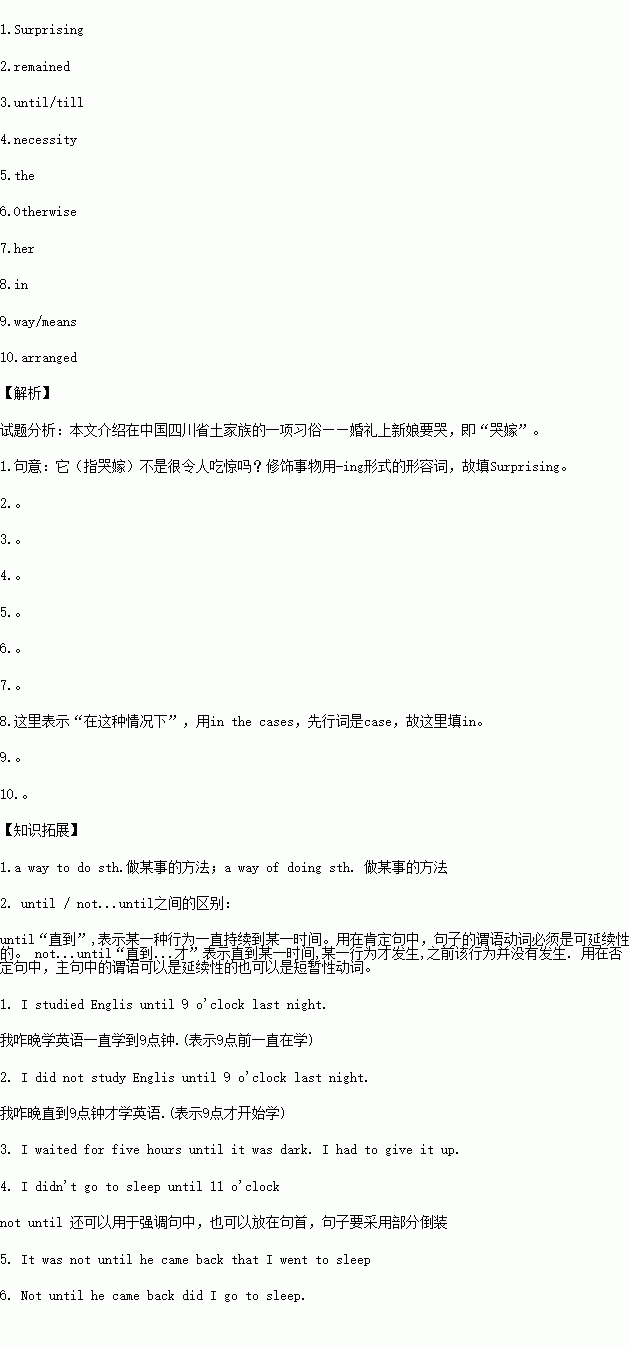题目内容
阅读下面材料,在空白处填入适当的内容(不多于3个单词)或括号内单词的正确形式。
Crying marriage? 1. (surprise), isn’t it? Factually, the custom of crying marriage existed a long time ago in many areas of Southwest China’s Sichuan Province, and 2. (remain) in fashion 3. the end of the Qing Dynasty. Though not so popular as before, the custom is still observed by people in many places, especially Tujia people, who view it as a 4. (necessary) to marriage procedure.
It is very much 5. same in different places of the province. According to elderly people, every bride had to cry at the wedding. 6. , the bride’s neighbors would look down upon 7. as a poorly cultivated girl and she would become the laughingstock of the village. In fact, there were cases 8. which the bride was beaten by her mother for not crying at the wedding ceremony.
In a word, crying at wedding is a 9. by custom to set off the happiness of the wedding through falsely sorrowful words. However, in the 10. (arrange) marriages of the old days of China, there were indeed quite a lot of brides who cried over their unsatisfactory marriage and even their miserable life.
 智趣寒假作业云南科技出版社系列答案
智趣寒假作业云南科技出版社系列答案
